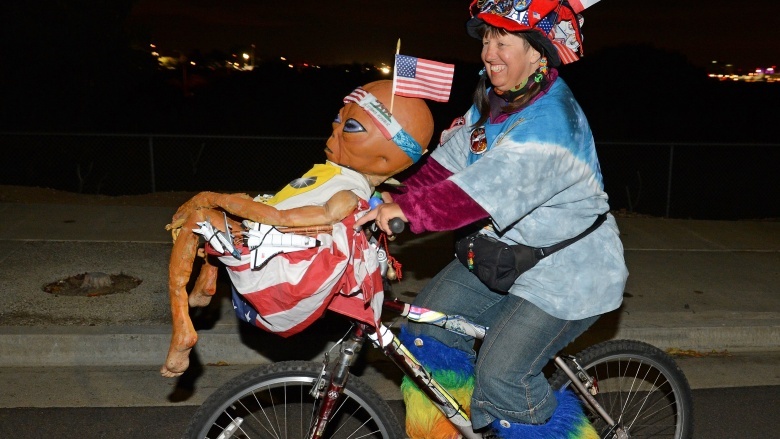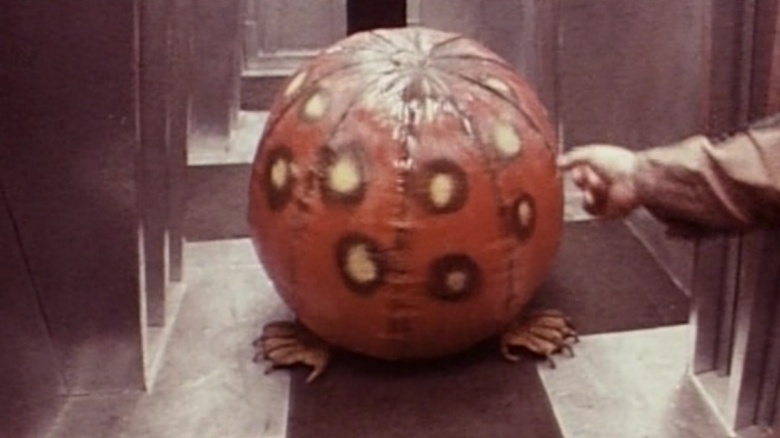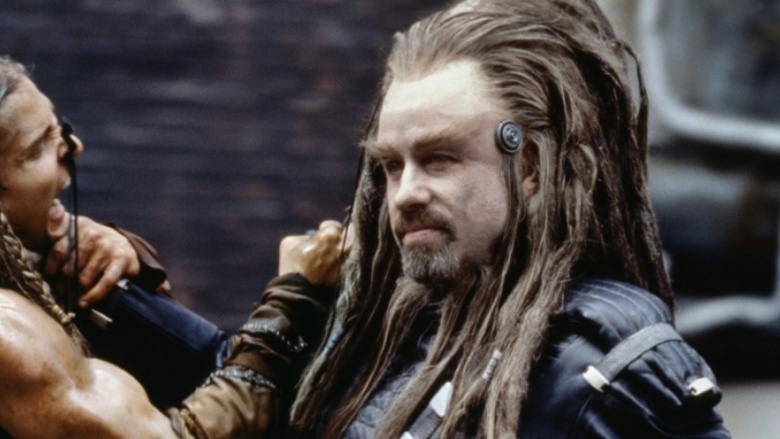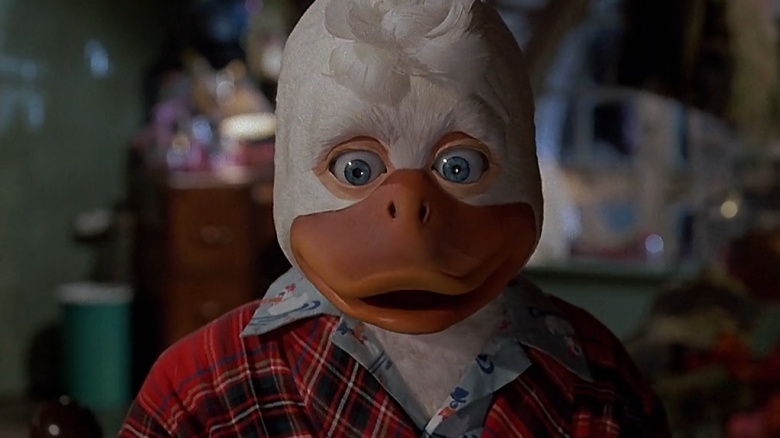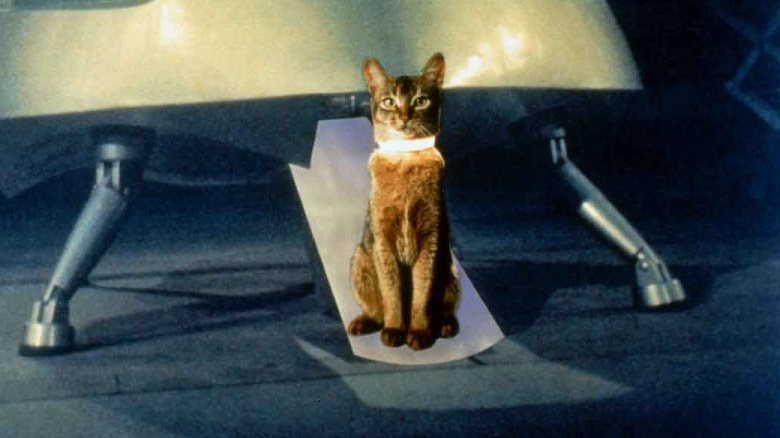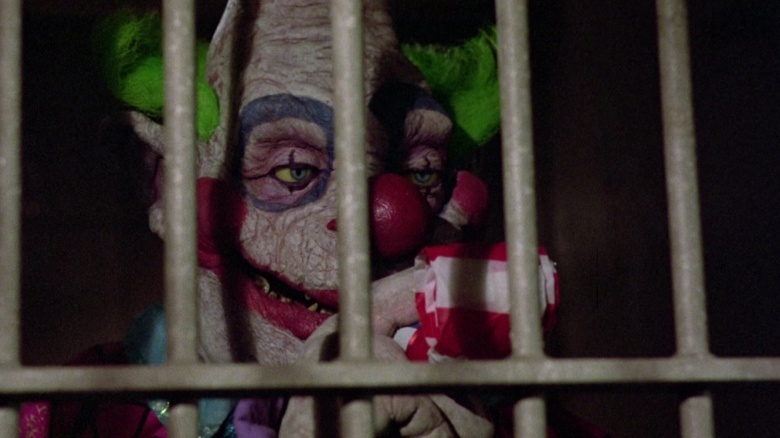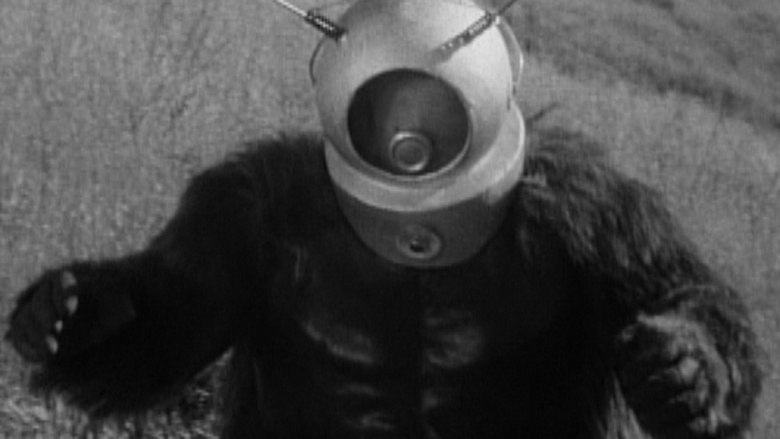Strange Ways Aliens Have Been Portrayed On Film
While plenty of people claim to have made contact with alien life, we still don't really know what beings from other planets might look like—which means dreaming up a creature design is one of the coolest challenges facing any filmmaker who wants to depict them on screen. Of course, not all on-screen aliens are created equal. Here, we commemorate some of Hollywood's strangest attempts to show us what might be out there.
A beach ball with feet - Dark Star
There's no shortage of strangeness to be found in this early effort from future Hollywood legend John Carpenter, who was barely out of film school when he directed Dark Star. Made on a shoestring $60,000 budget, it's part workplace comedy, part sci-fi satire, and part thought-provoking treatise on artificial intelligence and the future of mankind—all presented with an intoxicating, uniquely '70s blend of lo-fi enthusiasm and borderline incompetence. Case in point: the alien that serves as a sort of ship mascot for the film's protagonists, who've been tasked with piloting the titular ship across the galaxy and blowing up "unstable planets" with AI-enhanced bombs. While definitely intended to provide some comic relief (particularly in a sequence during which the alien attempts to tickle its captor down an elevator shaft), it seems safe to assume Carpenter was aiming for laughs of the intentional variety, not the involuntary chuckles one tends to let out when seeing what appears to be a painted beachball with claws for feet.
John Travolta with dreadlocks - Battlefield Earth
John Travolta's post-Pulp Fiction comeback was one of Hollywood's most unlikely feel-good stories of the '90s. It seemed to offer a dignified final act for a career that rocketed to superstardom with Saturday Night Fever only to come crashing back to Earth with dreck like Two of a Kind and Look Who's Talking Now. But just a few short years after rising from the ashes, Travolta decided to cash in his freshly reacquired clout to produce his passion project: a big-screen adaptation of the L. Ron Hubbard novel Battlefield Earth. One of the most infamous duds in cinematic history, the movie has a lot of obvious problems. But one of the most hilarious might be his own appearance as Terl, a vicious alien whose fearsome status as an enslaver of humanity is severely undermined by the fact that he looks like a Rastafarian stockbroker who's between sets playing with a Kiss tribute band.
A talking duck - Howard the Duck
These days, we wouldn't bet against Marvel's ability to turn any comic into a blockbuster motion picture. But in the '80s, before the company started its own film studio (or could reap the countless benefits of modern special-effects technology), it was a very different story. One of the odder adaptations was 1986's Howard the Duck, which differed from its comic book-derived brethren in a couple of major ways. First, it was a big-budget Lucasfilm release, therefore commanding a far higher profile than just about any other Marvel movie to that point. Second, it was about an alien who lands on Earth (in Cleveland, natch) and looks like a talking duck. It's the kind of premise that might be just wacky enough to work for today's Marvel—witness the glee with which comics fans greeted Howard's Guardians of the Galaxy cameo—but between the clunky screenplay and frankly disconcerting special effects, this Duck was cooked.
Walking plants - The Day of the Triffids
It's become very fashionable to bag on the movie industry's current over-reliance on CGI, and for some very good reasons. For proof, see the Star Wars prequels—or better yet, don't. But just like any other tool, seamless computer graphics can come in awfully handy when they're utilized the right way. Fortunately for modern audiences, they also keep filmmakers from wandering into the goofy-looking low-budget depths resorted to by directors like Steve Sekely, whose 1963 adaptation of The Day of the Triffids finds Earth in danger of succumbing to enslavement by a species of aliens that looks like nothing so much as a gang of shuffling plants. John Wyndham's 1951 novel of the same name remains solid source material—the story's been adapted more than once since—but Hollywood just wasn't ready yet.
A telepathic cat - The Cat from Outer Space
If you're in the right mood for it, Disney's live-action '70s filmography contains some truly delightful cheese, and The Cat from Outer Space is a particularly pungent example. Like a lot of the studio's efforts from the era, it's populated with an eclectic array of character actors (the cast includes Sandy Duncan, Harry Morgan, and McLean Stevenson) and rounded out with endearingly low-budget effects. But as you might guess given the title, what sets this entry apart is its star, a catlike alien named Jake who uses his glowing collar to communicate telepathically with Earthlings after making an emergency pit stop on our planet. Squint closely enough, and you can almost see studio execs banking on an animal-driven franchise to compete with '70s box office top dog Benji. Unfortunately for fans of feline sci-fi comedy, this remains Jake's only adventure (so far).
Killer clowns—er, klowns - Killer Klowns from Outer Space
The technical name for a fear of clowns is coulrophobia, and if you've been diagnosed with it, you might want to avoid 1988's Killer Klowns from Outer Space. As one might expect, it's a goofy sci-fi movie about a sadistic gang of aliens who look like clowns and go around the galaxy killing. And while the cheerfully weird end result is actually one of the few cult classics that's genuinely enjoyable in addition to being so bad it's good, we'd be remiss if we didn't mention the Klowns, if for no other reason than the fact that they dispatch their victims by wrapping them in a liquefying agent that looks like cotton candy.
A scuba-diving gorilla - Robot Monster
Filmmakers have tried to bridge the gap between their budgets and their visions in all sorts of ways over the years. But Phil Tucker, director of 1953's Robot Monster, deserves a special place of honor on the list for his brilliant decision to bring his movie's main villain—an "evil moon robot" named Ro-Man—to life by putting a guy in a gorilla suit and slapping a diver's helmet on his head. Of all the surreally chintzy sci-fi that wafted through American drive-ins during the '50s, Robot Monster (which was released in 3D) might be the chintziest, and the stock footage and hammy acting larded over everything is just an added bonus.
